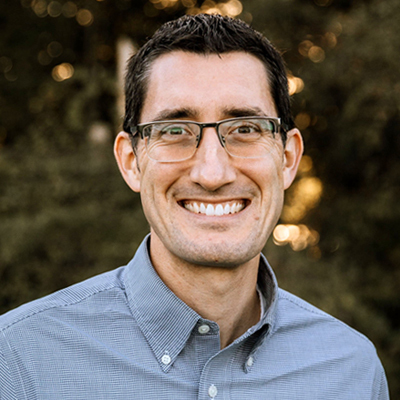Cody J. Smith Elizabeth and Michael Gallagher Associate Professor

Research Interests:
There is a gap in our understanding of how the precise organization of cells in the nervous system impacts human behavior and disease. The Smith lab’s goal is to address this by understanding how stem cells and other cell populations build and rebuild the nervous system. Using advanced imaging approaches with molecular and cellular biology techniques we have the opportunity to reveal new biological processes that occur during development and regeneration of the nervous system, investigate the blueprint and construction of those processes and then discover the overall behavioral impact of disrupting such biology. These strategies will help us gain insight into how diseases manifest themselves in the clinic. The basic biology they aim to discover can provide insight into neurodevelopmental disorders such as Charcot Marie Tooth Disorder (CMT), neurodegenerative diseases like Multiple Sclerosis (MS) and nerve regeneration following injuries like spinal cord injury (SCI). The Smith lab is currently pursuing:
- What organizational principles build/re-build selective cellular boundaries? How glial and neuronal populations assemble at specific regions of the nervous system is poorly understood. However, both CNS and PNS glial cell-types must interact and coordinate their differentiation and maturation as the neurons do the same. By investigating the developmental blueprint for assembling nervous system regions we hope to provide insight into how regeneration of nerves either succeeds or fails.
- How do neurons and glia communicate and coordinate to establish functional circuits? The precise wiring of the nervous system ensures animals can interact and respond to their environment. These behavioral circuits can be rooted in the stages of development when neurons are pathfinding through the nervous system and building synaptic connections with their precise neuronal partners. However, in a crowded space like the spinal cord, retina and brain, the ability for neurons to specifically connect to “correct” neurons while simultaneously avoid or eliminate “incorrect” neurons is an impressive feat. We are interested in understanding the role of glial cells in coordinating these connections.
Biography:
- Elizabeth and Michael Gallagher Associate Professor, Department of Biological Sciences, Center for Stem Cells and Regenerative Medicine 2021-Present
- Alfred P. Sloan Fellow of Neuroscience 2017
- Elizabeth and Michael Gallagher Assistant Professor, Department of Biological Sciences, Center for Stem Cells and Regenerative Medicine 2016-2021
- Postdoctoral Fellow, Department of Biology, University of Virginia, Charlottesville VA 2012-2016
- PhD, Cell and Developmental Biology, Vanderbilt University 2012
- B.S., Biology, Mercyhurst University 2007
Recent Papers:
- Nina L. Kikel-Coury, Jacob P. Brandt, Isabel A. Correia, Michael R. O’Dea, Dana F. DeSantis, Felicity Sterling, Kevin Vaughan, Gulberk Ozcebe, Pinar Zorlutuna, and Cody J. Smith. Identification of astroglia-like cardiac nexus glia that are critical regulators of cardiac development and function. PLoS Biology. 2021. https://journals.plos.org/plosbiology/article?id=10.1371/journal.pbio.3001444
- Dana F. DeSantis and Cody J. Smith. Tetris in the Nervous System: What Principles of Neuronal Tiling Can Tell Us About How Glia Play the Game. Front. Cell. Neuroscience. 2021. https://www.frontiersin.org/articles/10.3389/fncel.2021.734938/full
- Nina L. Kikel-Coury, Lauren A. Green, Evan L. Nichols, Abigail M. Zellmer, Sanjana Pai, Sam A. Hedlund, Kurt Marsden, and Cody J. Smith. Pioneer axons utilize a dcc signaling-mediated invasion brake to precisely complete their pathfinding odyssey. Journal of Neuroscience. 2021. https://www.jneurosci.org/content/41/31/6617
- Evan L. Nichols and Cody J. Smith. Functional regeneration of the sensory root via axonal invasion. Cell Reports. 2019. https://www.cell.com/cell-reports/fulltext/S2211-1247(19)31647-X
- Evan L. Nichols and Cody J. Smith. Synaptic-like vesicles facilitate pioneer axon invasion. Current Biology. 2019. https://www.cell.com/current-biology/fulltext/S0960-9822(19)30838-3
- Lauren Green, Julia Nebiolo and Cody J. Smith. Microglia exit the CNS in spinal root avulsion. PLoS Biology. 2019. https://journals.plos.org/plosbiology/article?id=10.1371/journal.pbio.3000159
- * Yide Zhang, *Evan L. Nichols, Abigail Zellmer, Cody Kankel, Scott S. Howard and Cody J. Smith. Generating intravital super-resolution movies with conventional microscopy reveals actin dynamics that construct pioneer axons. Development. 2019. *contributed equally. https://dev.biologists.org/content/146/5/dev171512
- Evan L. Nichols and Cody J. Smith. Pioneer axons employ Cajal’s battering ram to enter the spinal cord. Nature Communications. 2019. https://www.nature.com/articles/s41467-019-08421-9
- Evan Nichols, Lauren A. Green and Cody J. Smith. Ensheathing cells utilize dynamic tiling of neuronal somas in development and injury as early as neuronal differentiation. Neural Development. 2018. https://www.ncbi.nlm.nih.gov/pmc/articles/PMC6098834/pdf/13064_2018_Article_115.pdf
- Lauren A. Green and Cody J. Smith. Single-cell photoconversion in living intact zebrafish. Journal of Online Video Experimentation. 2017